I have ripped through the blue lampshade of the constraints of color. I have come out into the white. Follow me, comrade aviators. Swim into the abyss.
—Malevich, “Non-Objective Art and Suprematism” (1919)
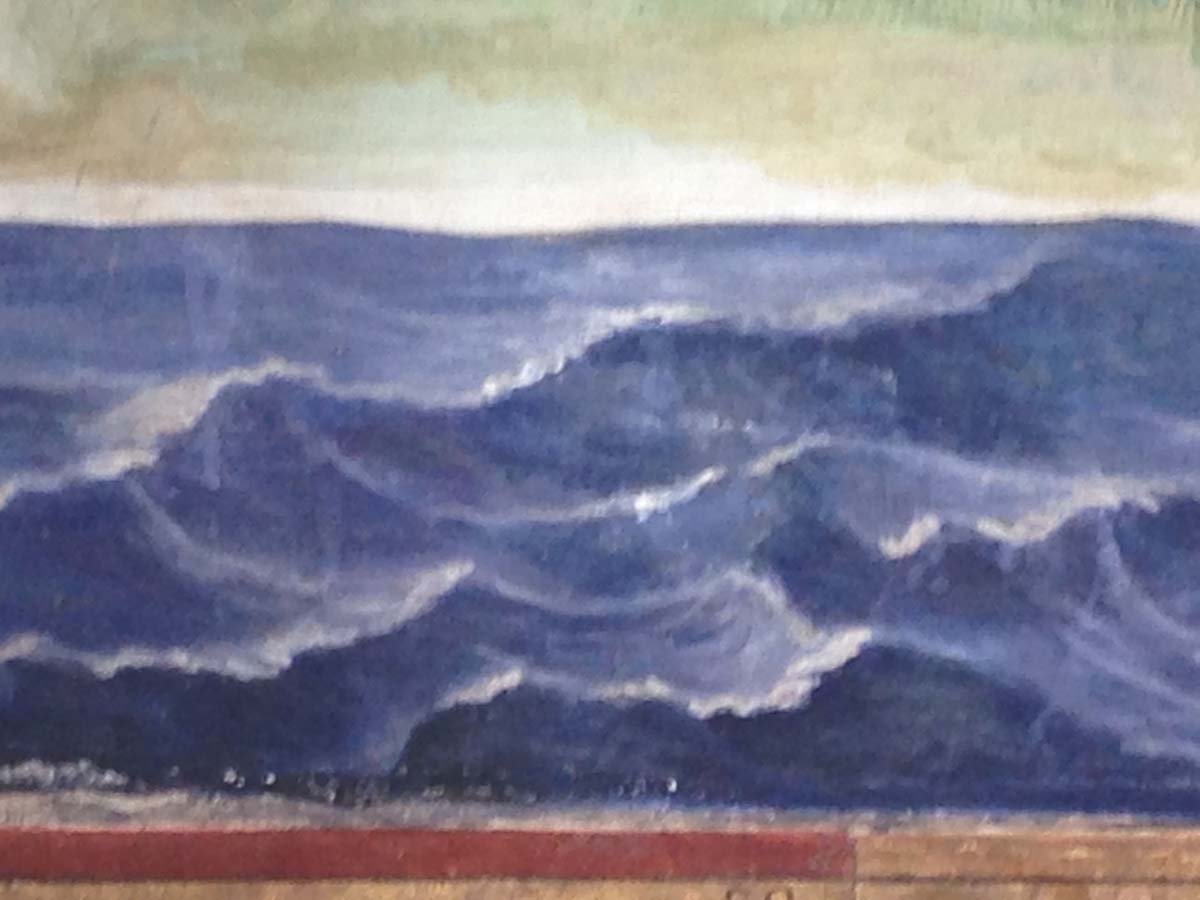
In the Vatican, the last room that you slide through on your way to the Sistine Chapel is a long hall filled with very large maps on each side.
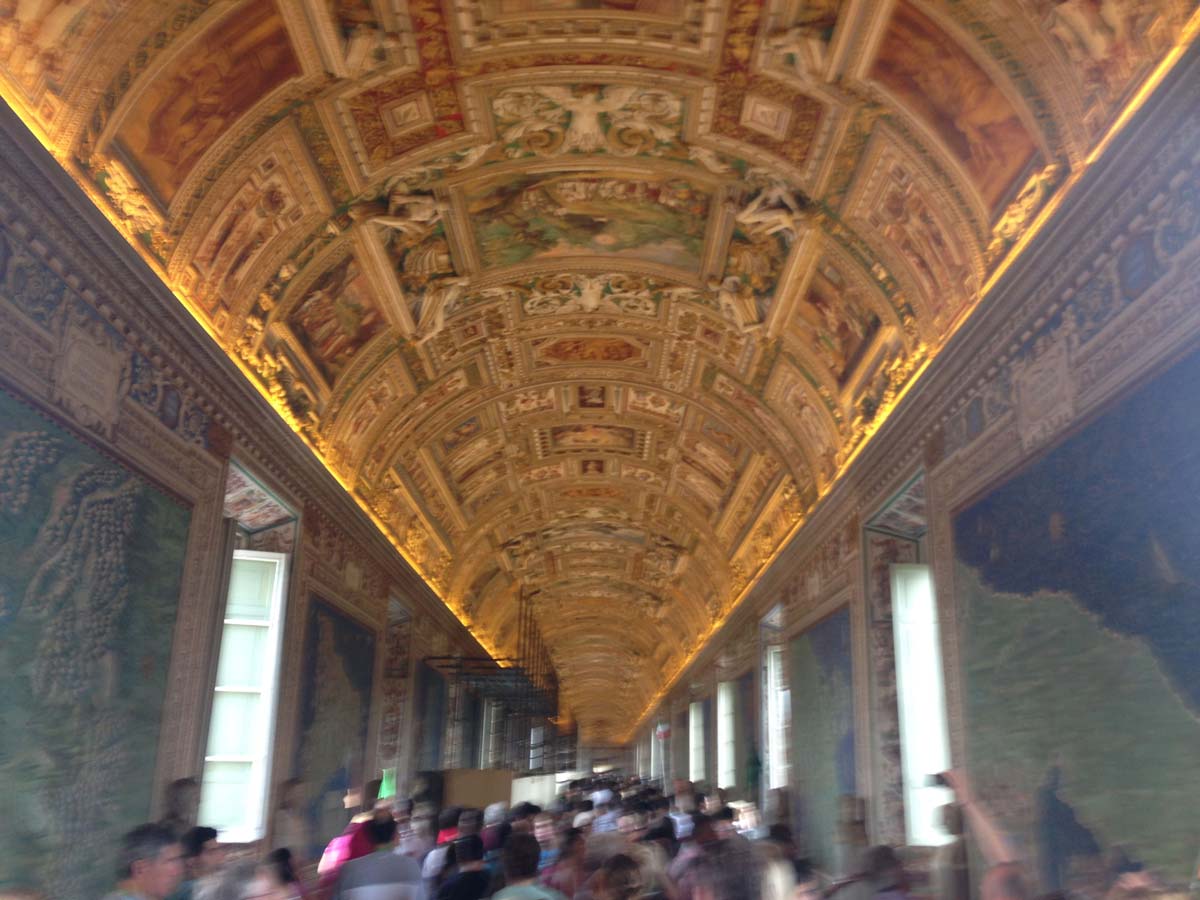
Constructed for the Renaissance popes, these maps present an immersive world order. They inundate you: their sheer size proclaims that you are not taking in information but rather resting in the midst of a contemplative experience of mastery.
The whole world looms up. (I mean: the circumscribed world related to the Papal State. But the point of the hall is that it feels “whole.”) This world is a thing to be encountered, known, inhabited—but from a distance, from the air.

This triumphant simulacrum systematically invites us into a seeing-from-above. We watch as parts and wholes interlock. We see / feel / read the geography of the Italian peninsula, moving in and out of various scales.
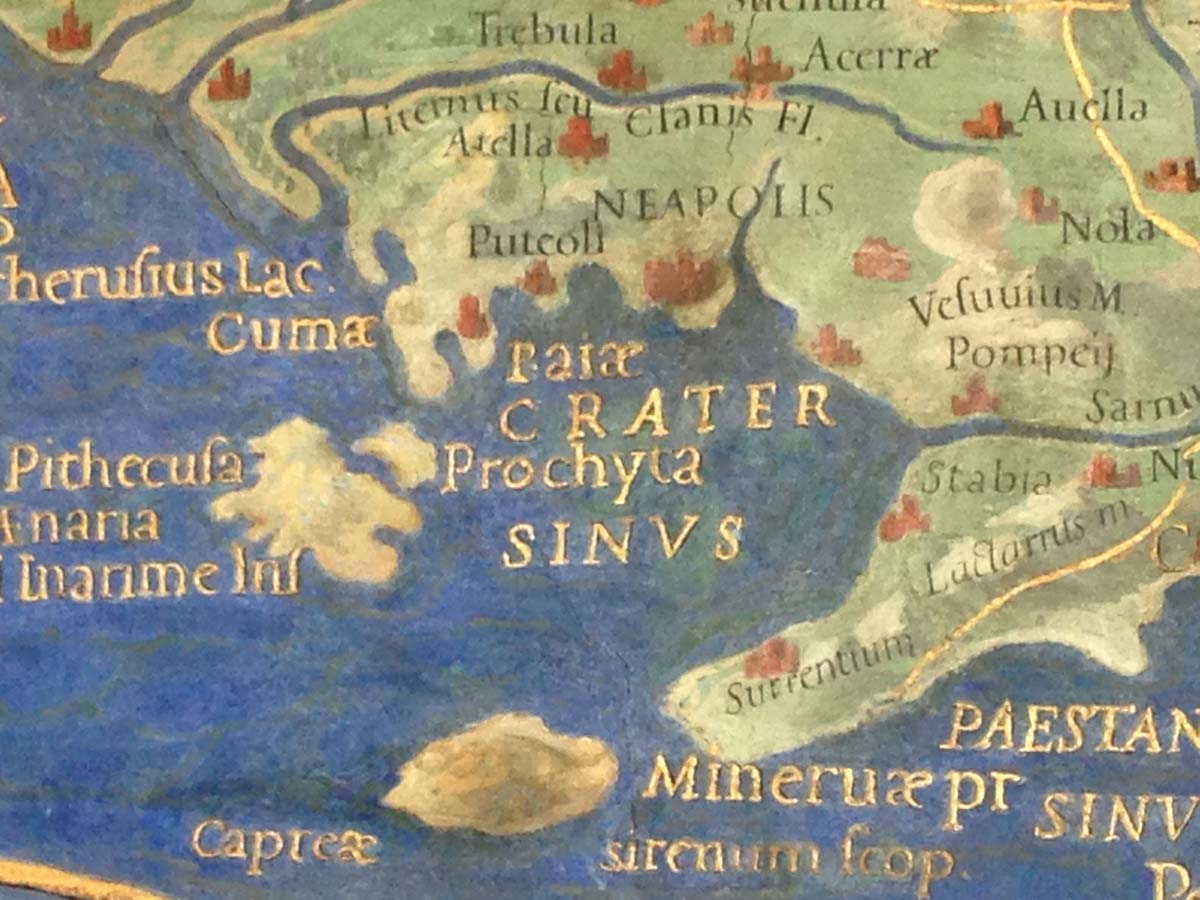
This is seeing as downward and flattening projection of power. An imperial gaze emanates from the walls as we look at them. The walls look at us. Their gaze is not simply the gaze of the hilltop sovereign, “master of all I survey,” but rather the gaze from the Sistine Chapel’s floating-flying-bearded-God. Like the finger that is about to give drooping Adam life, the maps emanate both action and potentiality. This gaze, moving to and from us, pushes and pulls us into the vortex of knowledge and power: we see, we look, we know, we have. (We came, we saw, we conquered.)
We are invited into sky-realms.
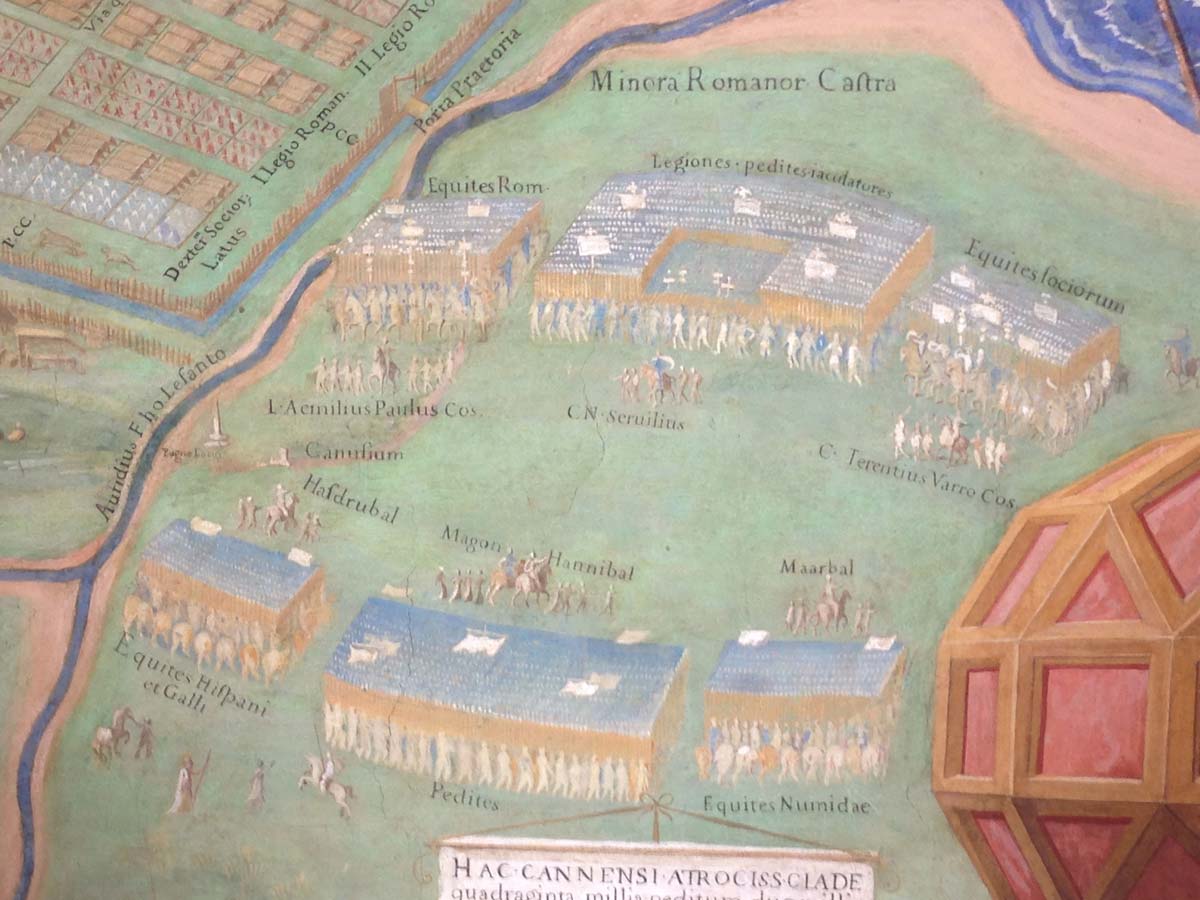
The floating three-dimensional orb of recessed geometrical shape above the arrayed troops could be the abstract totem for such dominion. In some kind of Renaissance-futurist amalgam, space qua space is imagined as mathematical form, gridded, unreal. The armies behold this alien machine. The trajectory, the destiny, the desire is already there in those rectilinear formations, encoded in the Renaissance “military science” of squares and lines: to leave the ground, to move freely across the earth …
The aerial gaze orders and is ordered—long before Italian airmen fly over Libya, dropping their grenades (1912), long before zeppelins emerge over the London skies (1917), and long before an American long-range bomber, the Enola Gay, flies over the Pacific and drops the first atomic bomb (August 6, 1945).
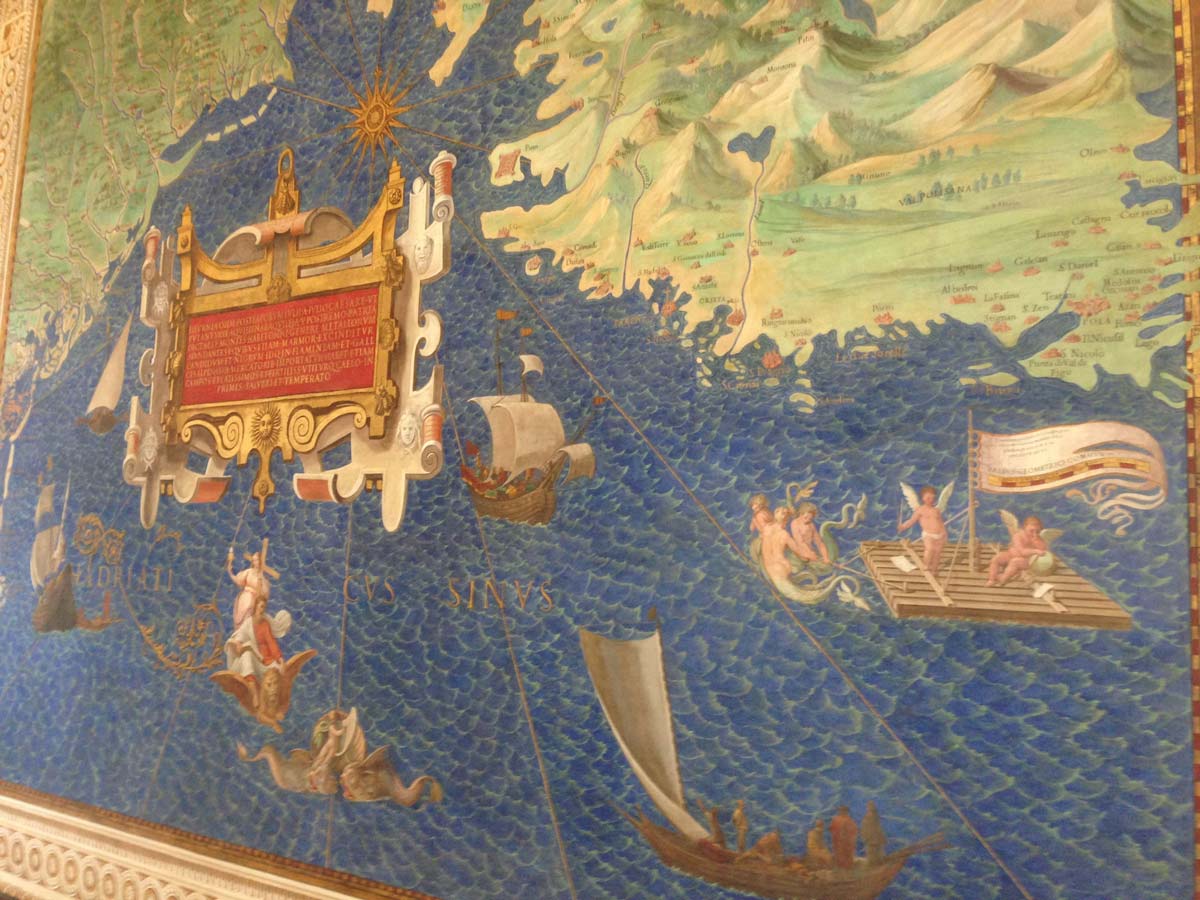
In a “Question Concerning Technology” (1962), Heidegger says: “The threat to man does not come in the first instance from the potentially lethal machines and apparatus of technology. The actual threat has already afflicted man in his essence.” So, the apparatus as apparatus—maps, planes, enriched uranium, theoretical physics, etc. etc.—are instruments of the affliction, revelations of the affliction. Now where this leaves us is another question. An important question to ask (particularly of one who benefitted from Nazi power). What to do when afflicted in our essence? Heidegger says we are not absolutely destined for the destructions awaiting us.
But where’s the possibility of being otherwise?
Or—of doing otherwise?
“Could it be that the fine arts are called to poetic revealing? Could it be that revealing lays claim to the arts most primally, so that they for their part may expressly foster the growth of the saving power, may awaken and found anew our vision of, and trust in, that which grants.” (340)
And yet …
Technological mastery or poetic vision—they seem so continuous, so contiguous. Parallel in their abstract armature. … “that which grants.” Floating orbs with cardinal directions spilling out everywhere.
“Follow me, comrade aviators. Swim into the abyss.”
The Enola Gay flew over the waves on August 6, 1945.
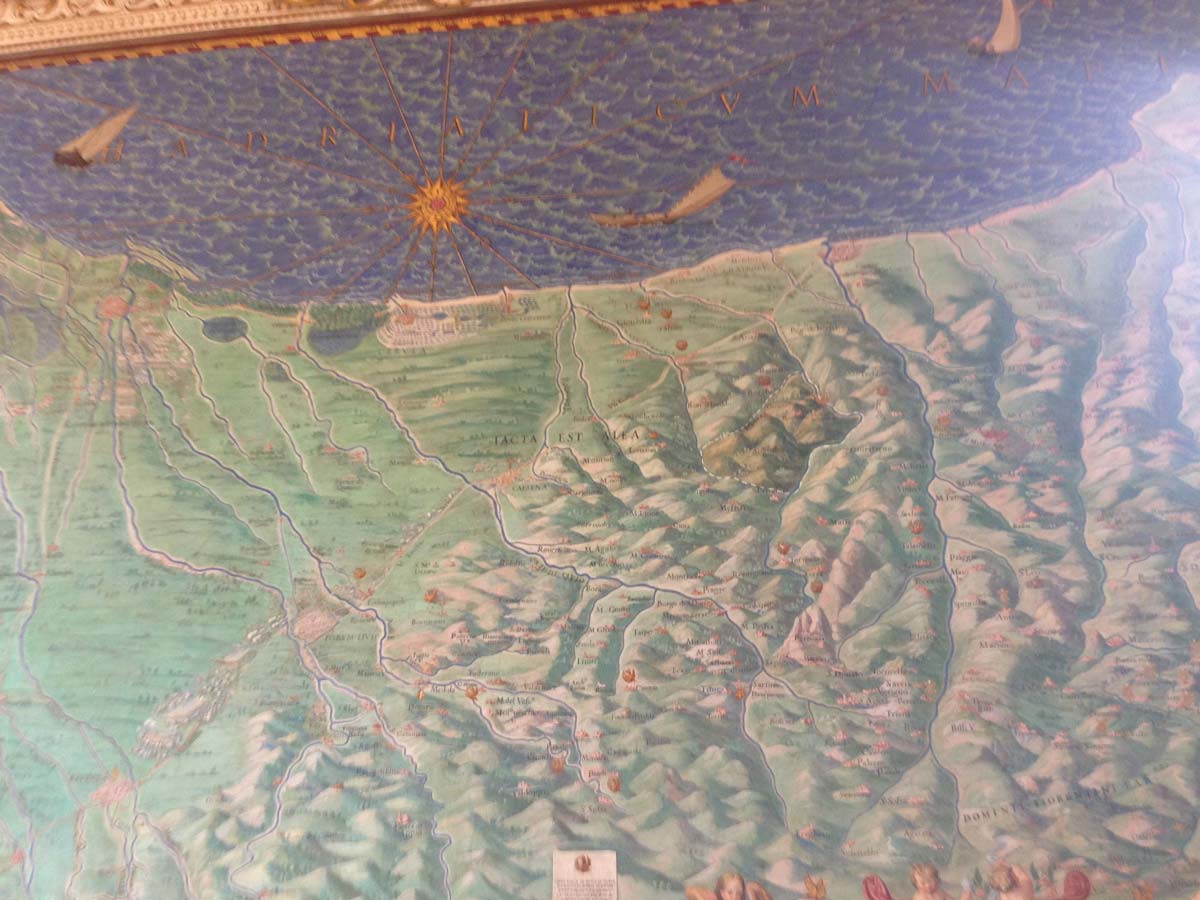
Other immersions offer themselves. The revelation these maps afford is not in (or not only in) what is revealed. Yes, other immersions offer themselves.
There is an excess: accident, waste, repetition, insignificance … something other than revelation.
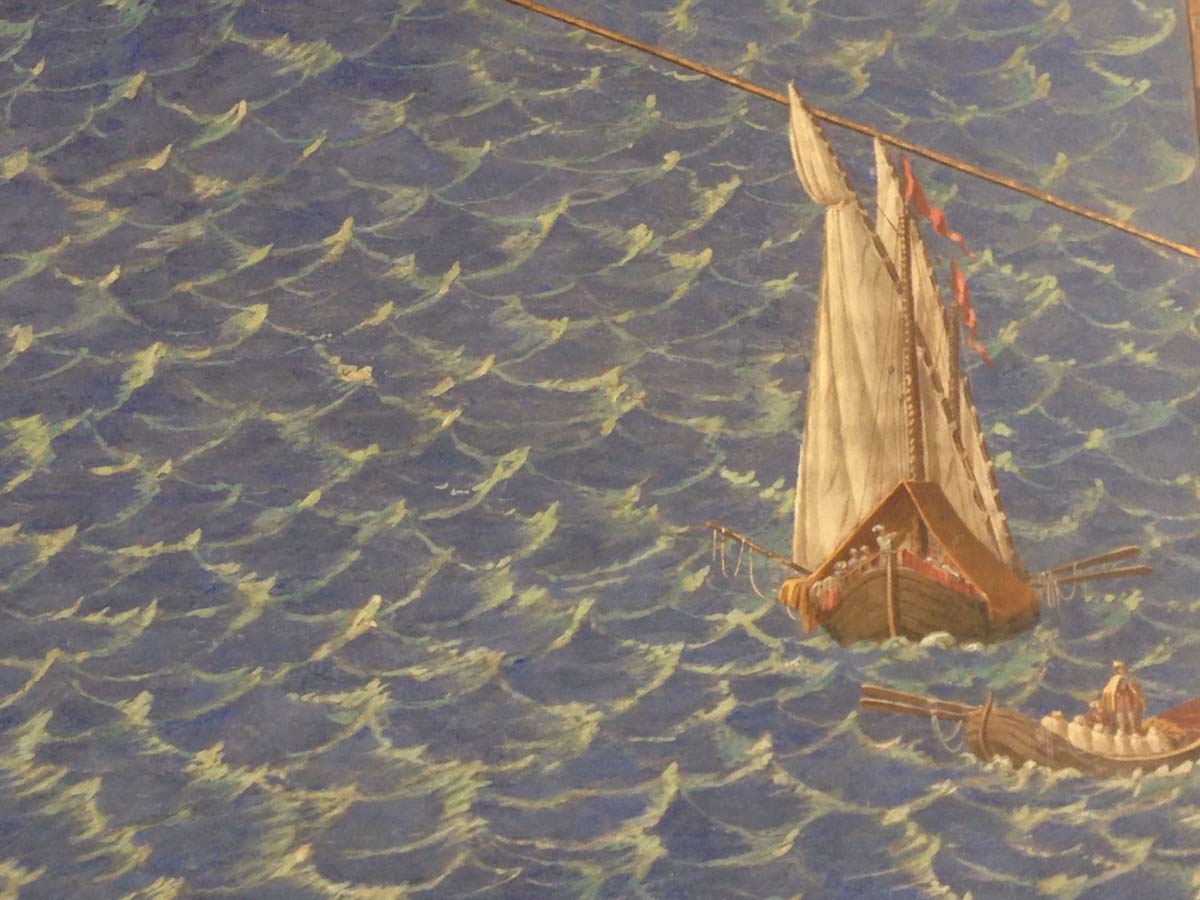
It is not that these maps are direct or even indirect causes of mass death. It is not that they are pre-ordained to represent only a revealing power. They are figurations inside of an unmappable non-totality of meanings and movements and pleasures and extraneous desires and flubs and sketches and … After all one can’t help but imagine that even the sovereign’s god-like gaze could (and probably had the luxury to be) somewhat laconic, wayward, even lazy, merely glancing, as it rushed through the hall.
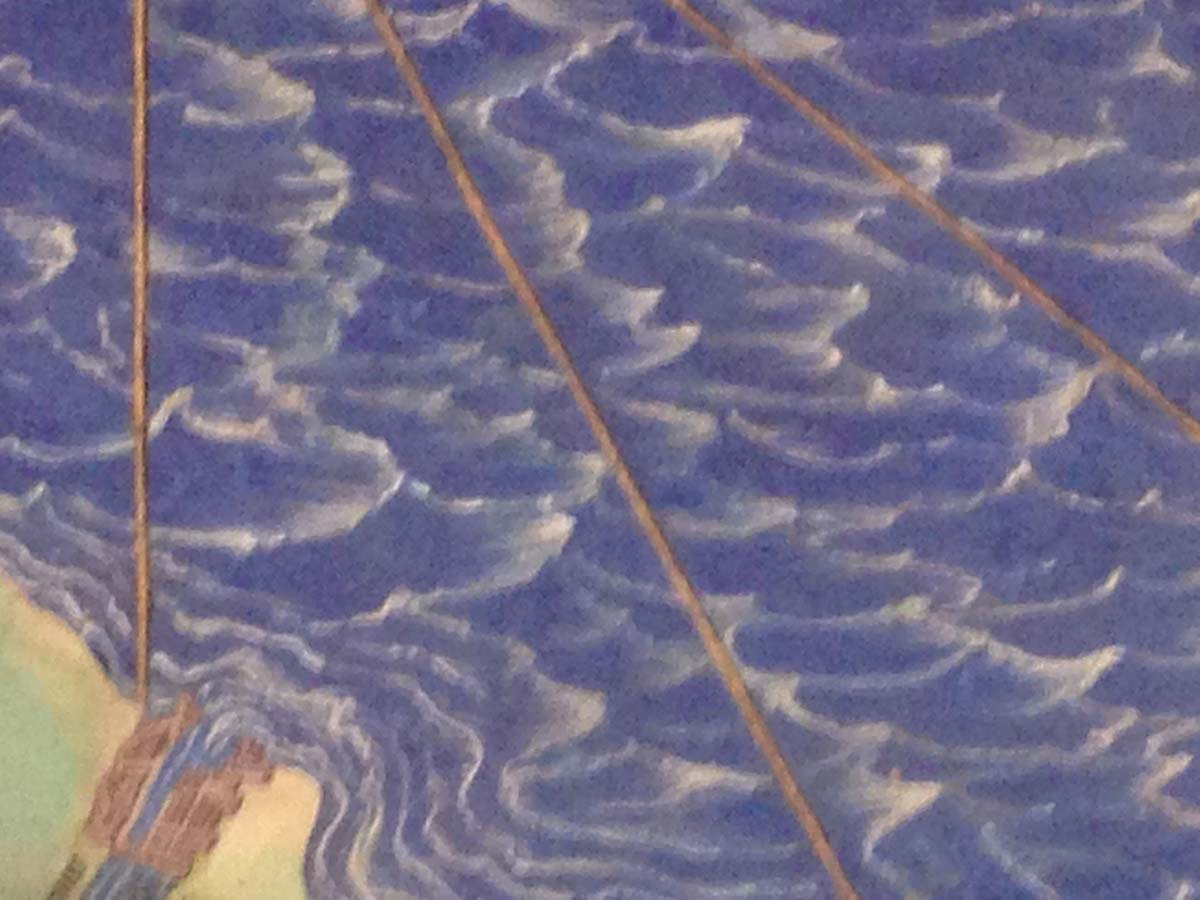
That is to say: the itinerary through these maps is not merely a flight path, a precise plan of attack charted from a plane flying from point A to point B in order to let fall a single bomb and witness the bright light of historical inevitability.
A to B, but over a wide and open sea. “Waste and empty sea.” (“Öd’ und leer das Meer”).
Other immersions offer themselves.
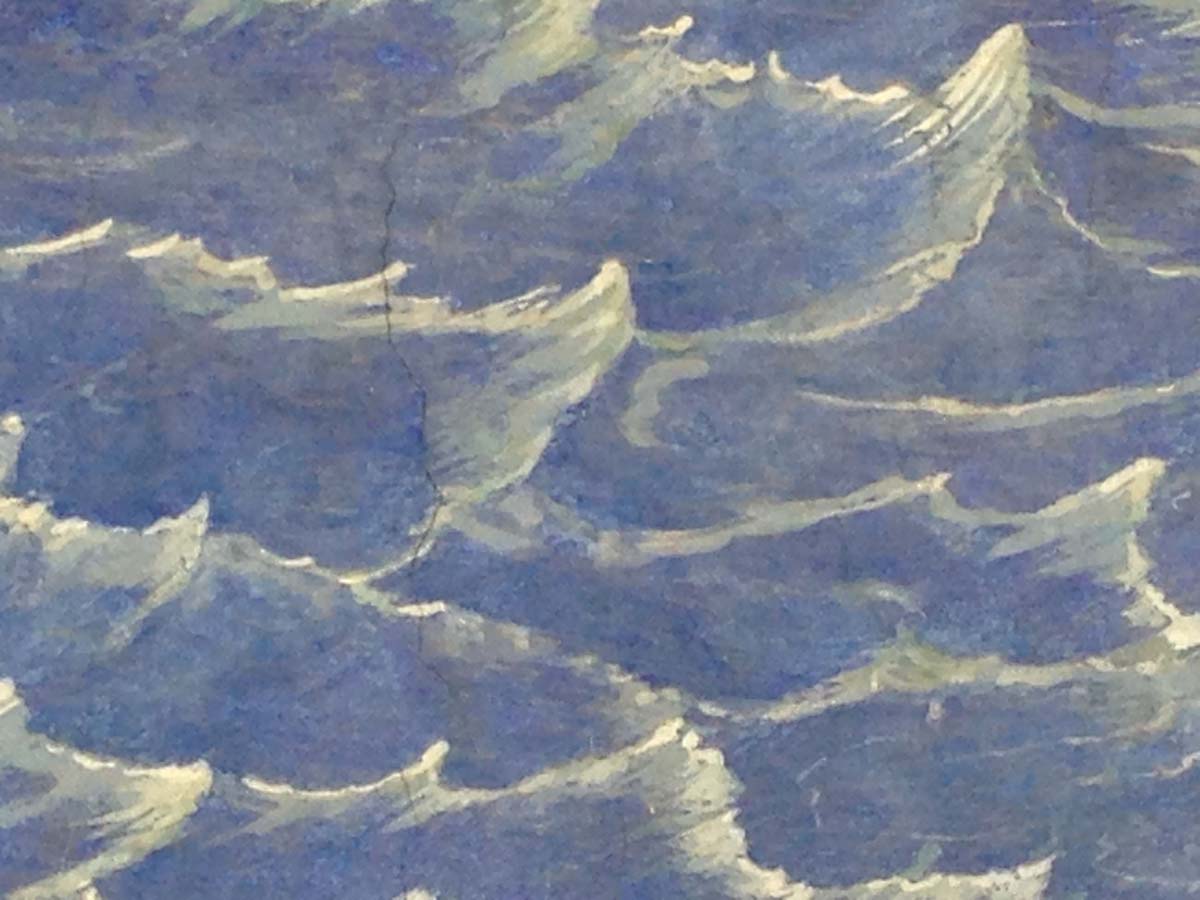
Almost every map in the hall pictures waves. Rather than the undifferentiated blue of contemporary atlases or the underwater landscapes often indicated on trans-continental flights (as if to say, “Don’t worry! There is more land to be mapped under the water! It’s not just a giant, unforgiving ocean beneath you but more landscape”), we see waves. Sure, a boat here, an ornamental insignia there, but for the most part, one set of waves upon another. In some of the maps they seem to overwhelm the land.
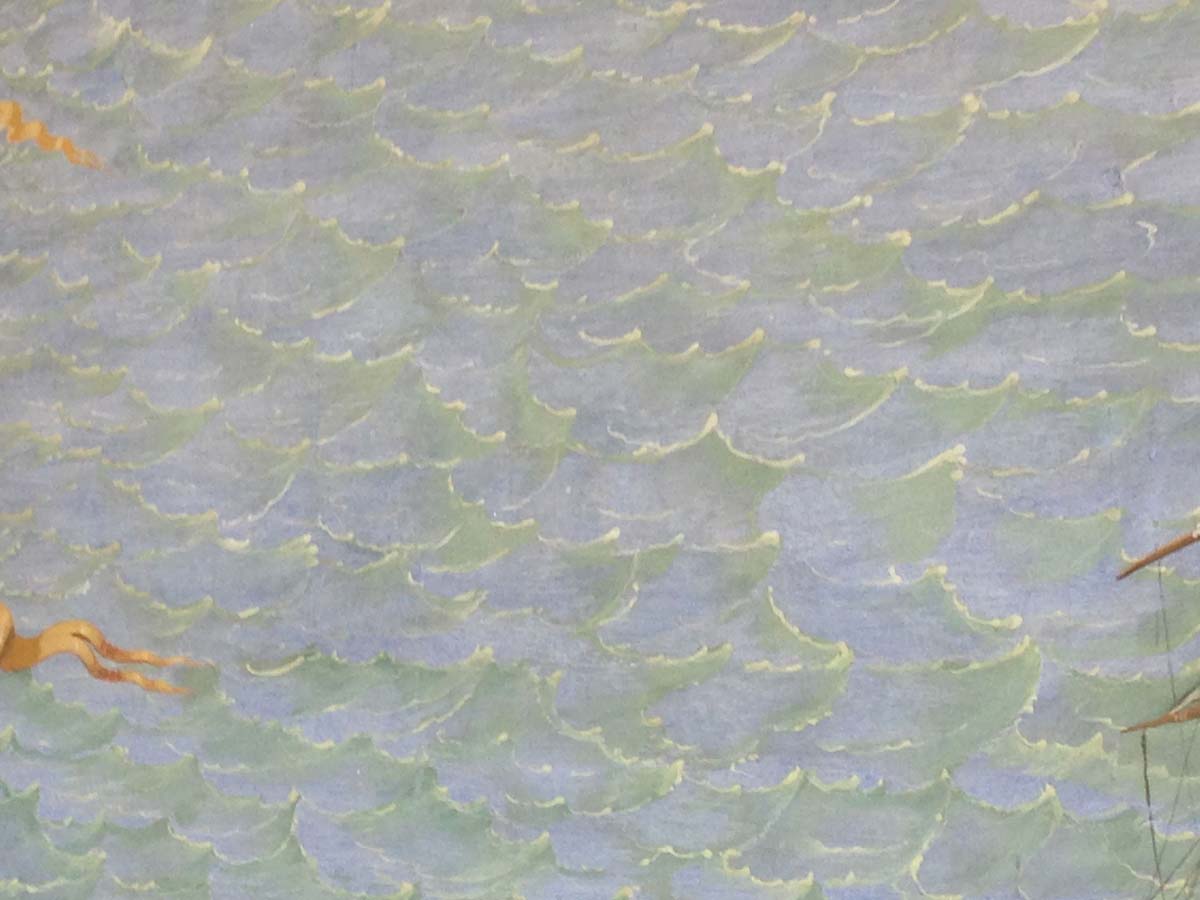
The waves present another way of seeing within these maps. The undifferentiated wave-scape, wrought through repetition and variation, registers the possibility of an immersion in gesture and movement without coordinates.
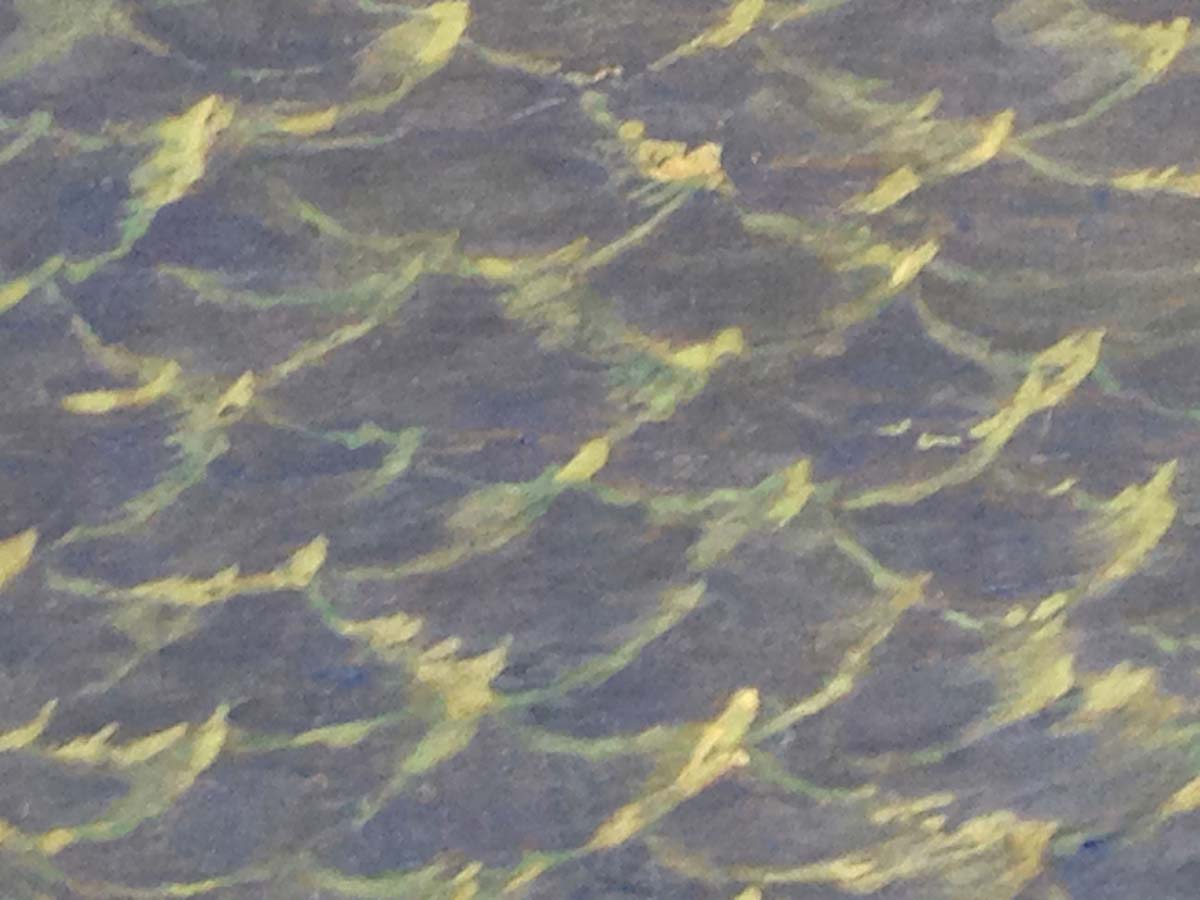
The waves are presented as so much excess, in such a loving and yet efficient way (how many artist assistants had to work to paint each wave, bodying forth each insignificant tuft of white energy?). Each wave-scape is, to me, vast and yet intimate: offering itself up as an index of infinity, the beginning of a series, and yet also a simple surface opening, cresting, vibrating, undulating. There is a joy there, unwritten and unrecorded and yet preserved through idleness and lulling repetition.
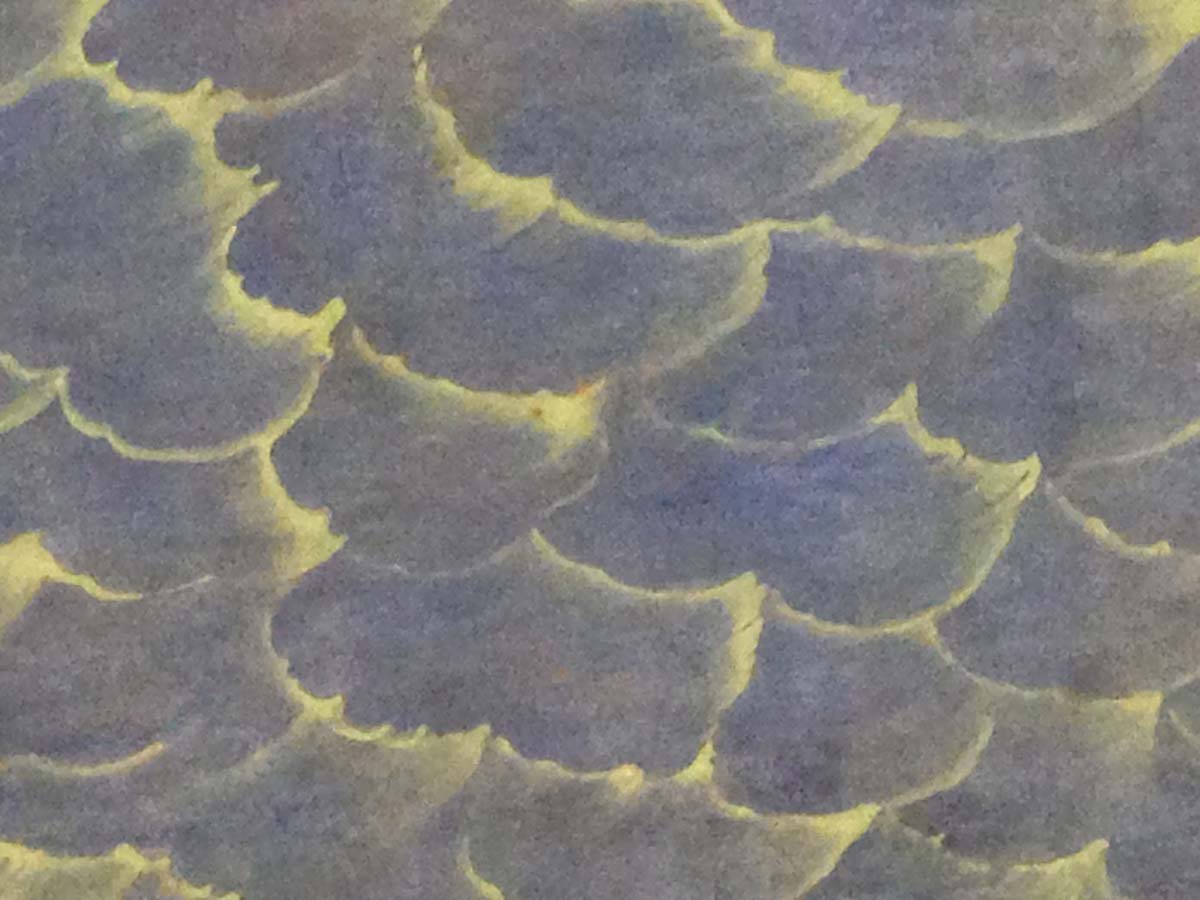
This partial, differential, indexical infinity moves laterally against (and erodes) the self-proclaiming, unified infinity that would imagine an anthropomorphic, bearded God scanning the land, delimiting territories, granting chunks of political power. The waves move up and over, here and there, falling here and there. The waves point to, emanate from, and elaborate a series that does not have a human end. They shove the material. The waves: physical perturbations, ply upon ply, the hiss of something-else, the overwhelming of the continuation that we are left with and that leaves us …

Charles Olson: “sound first / even before color of the darkness” … (The Maximus Poems, “Each Night is No Loss, It is a daily eclipse / by the Earth of the Sun”)

~r hav.ripped,hrough.hebluelampshadeofthe consrraintsofcolor. lhave<”me out into Ihe white. Follow me, contr.Jc “”iato.... Swim into Ihe abyss.~·›

~r hav.ripped,hrough.hebluelampshadeofthe consrraintsofcolor. lhave<”me out into Ihe white. Follow me, contr.Jc “”iato.... Swim into Ihe abyss.~·›

~r hav.ripped,hrough.hebluelampshadeofthe consrraintsofcolor. lhave<”me out into Ihe white. Follow me, contr.Jc “”iato.... Swim into Ihe abyss.~·›
